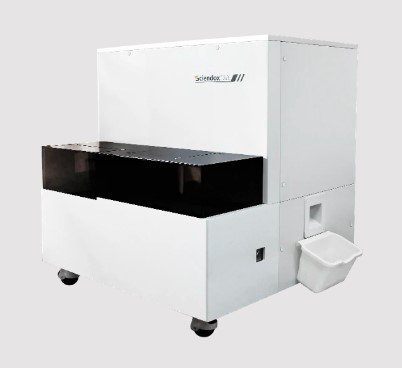Training and Education Requirements for Phlebotomists in Long-Term Care Facilities
Summary
- Phlebotomists working in long-term care facilities in the United States must undergo specific training and education requirements to ensure the safety and well-being of patients.
- Training programs for phlebotomists typically include coursework in anatomy, physiology, medical terminology, and phlebotomy techniques.
- Phlebotomists working in long-term care facilities must also be proficient in handling Geriatric Patients and understanding the unique challenges they may face.
Introduction
Phlebotomists play a crucial role in the healthcare industry by drawing blood for medical tests, transfusions, research, or blood donations. In long-term care facilities, where patients may have complex medical conditions and limited mobility, phlebotomists must possess specialized training and education to provide safe and effective care. This article will explore the specific training and education requirements necessary for phlebotomists working in long-term care facilities in the United States.
Educational Requirements
Phlebotomists working in long-term care facilities must typically complete a phlebotomy training program from an accredited institution. These programs are available at community colleges, vocational schools, and technical institutes. The duration of these programs can vary but typically range from a few weeks to a few months. Some key components of phlebotomy training programs include:
Coursework
Phlebotomy training programs usually include coursework in the following areas:
- Anatomy and Physiology: Understanding the structure and function of the human body is crucial for phlebotomists to safely draw blood from patients.
- Medical Terminology: Phlebotomists must be familiar with medical terminology to accurately communicate with other healthcare professionals.
- Phlebotomy Techniques: Training programs teach students how to properly identify veins, use Venipuncture techniques, and handle blood specimens.
Clinical Experience
Phlebotomy training programs also include hands-on clinical experience where students practice their skills under the supervision of experienced phlebotomists. This hands-on training is essential for students to develop the confidence and proficiency needed to work with patients in a real-world setting.
Certification Requirements
While certification is not always required to work as a phlebotomist in long-term care facilities, many employers prefer to hire certified phlebotomists. The most common certification for phlebotomists in the United States is the Certified Phlebotomy Technician (CPT) credential, which is offered by organizations like the National Healthcareer Association and the American Society for Clinical Pathology. To obtain certification, phlebotomists must typically meet the following requirements:
- Completion of an accredited phlebotomy training program
- Passing a certification exam
- Continuing Education to maintain certification
Specialized Training for Long-Term Care Facilities
Phlebotomists working in long-term care facilities face unique challenges compared to those working in other healthcare settings. Patients in long-term care facilities are often elderly and may have multiple chronic conditions, limited mobility, or cognitive impairments. To provide safe and effective care in this environment, phlebotomists must undergo specialized training that includes:
Geriatric Phlebotomy
Training programs for phlebotomists working in long-term care facilities often include coursework on geriatric phlebotomy. This training teaches phlebotomists how to interact with elderly patients in a compassionate and respectful manner, address their unique needs and concerns, and adapt phlebotomy techniques to accommodate their physical limitations.
Infection Control
Given the vulnerable nature of patients in long-term care facilities, phlebotomists must be well-versed in infection control practices to prevent the spread of infections. Training in infection control typically includes proper Hand Hygiene, use of personal protective equipment, and disposal of hazardous materials.
Communication Skills
Phlebotomists working in long-term care facilities must have strong communication skills to effectively communicate with patients, their families, and other healthcare professionals. Training in communication skills can help phlebotomists build rapport with patients, alleviate their fears or anxieties, and ensure that they understand the phlebotomy process.
Conclusion
Phlebotomists working in long-term care facilities in the United States must undergo specific training and education requirements to provide safe and effective care to patients. The training programs for phlebotomists typically include coursework in anatomy, physiology, medical terminology, and phlebotomy techniques, as well as hands-on clinical experience. Phlebotomists working in long-term care facilities must also be proficient in handling Geriatric Patients, understanding infection control practices, and possessing strong communication skills to meet the unique needs of this patient population.

Disclaimer: The content provided on this blog is for informational purposes only, reflecting the personal opinions and insights of the author(s) on the topics. The information provided should not be used for diagnosing or treating a health problem or disease, and those seeking personal medical advice should consult with a licensed physician. Always seek the advice of your doctor or other qualified health provider regarding a medical condition. Never disregard professional medical advice or delay in seeking it because of something you have read on this website. If you think you may have a medical emergency, call 911 or go to the nearest emergency room immediately. No physician-patient relationship is created by this web site or its use. No contributors to this web site make any representations, express or implied, with respect to the information provided herein or to its use. While we strive to share accurate and up-to-date information, we cannot guarantee the completeness, reliability, or accuracy of the content. The blog may also include links to external websites and resources for the convenience of our readers. Please note that linking to other sites does not imply endorsement of their content, practices, or services by us. Readers should use their discretion and judgment while exploring any external links and resources mentioned on this blog.
